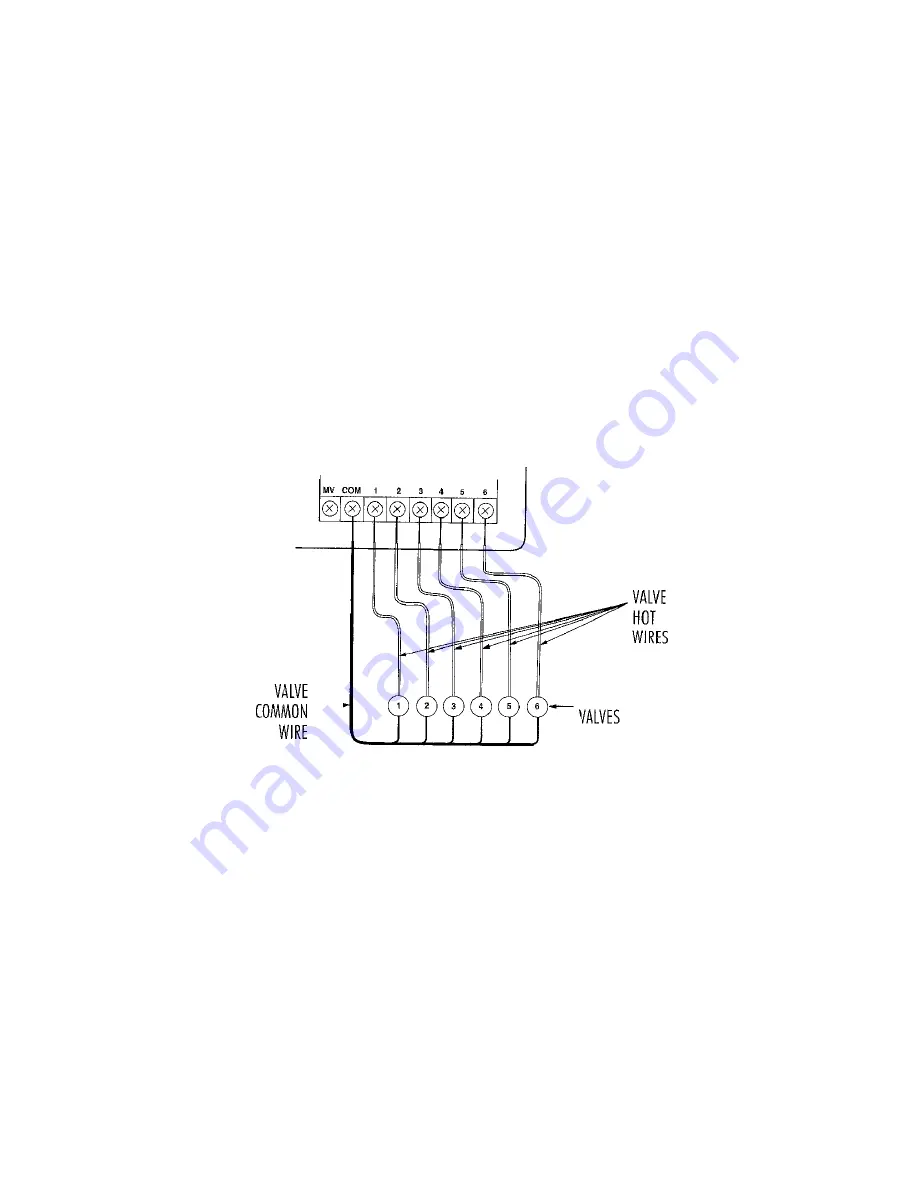
4
Connect the one common wire (usually the white strand) to the terminal labeled "COM". Connect the
second "hot" wire (usually the color-coded strand) from each valve to one of the terminals numbered
1 -6 on the number of stations on your timer model. Connect wire from valve 1 to terminal 1, valve 2
to terminal 2, etc.
NOTE:
Be sure the wire connections are tight and make good contact. Also, it is recommended that you
join all splices with watertight splice connectors to prevent corrosion.
CAUTION:
Wire only one valve to each terminal. Wiring more than one could result in damage to the
timer. Also, if using more than one timer, do not share "common" wires between the multiple timers.
TIP: To avoid possible pump damage, "jumper" wire each unused terminal screw to a terminal screw in use. See figure below.
STEP 4: WIRE VALVES
1.
Choose Wire (wire not included)
For runs of less than 800 feet, use 18 gauge color-coded, multi-strand direct burial wire. For runs of
longer than 800 feet, use 14 gauge color-coded, multi strand direct burial wire. Be sure the wire has
the number of strands equal to the number of valves used PLUS ONE for the Common Wire (e.g.
use 5 strand wire if there are 4 valves).
TIP: Spare wire strands maybe taped off for possible future expansion or trouble shooting use. Wire that will be buried under-
ground should have watertight connections and be approved for underground use. Avoid placing underground wire in locations
where it may be disturbed by digging or other movement.
2.
Connect Valve Wiring to Timer
To open wiring area on timer, lift cover over bottom panel. To lift panels, push down on panel and
pull bottom outward. Each valve connects to the timer through two wires. One wire (usually the white
strand) is connected as the "common" wire. All common wires should be spliced together at the
valves to become a single wire that will connect to the terminal marked "COM". The second or "hot"
wire (usually the color-coded strand) from each valve connects to one of the terminals numbered 1-
6. See the figure below.



























